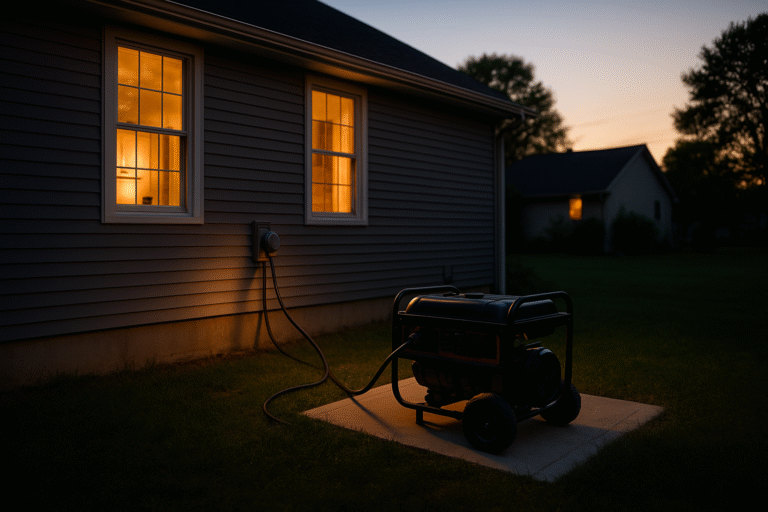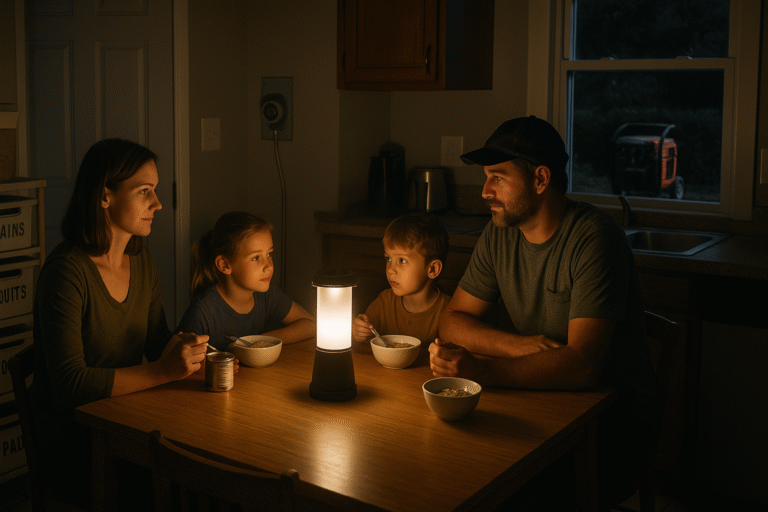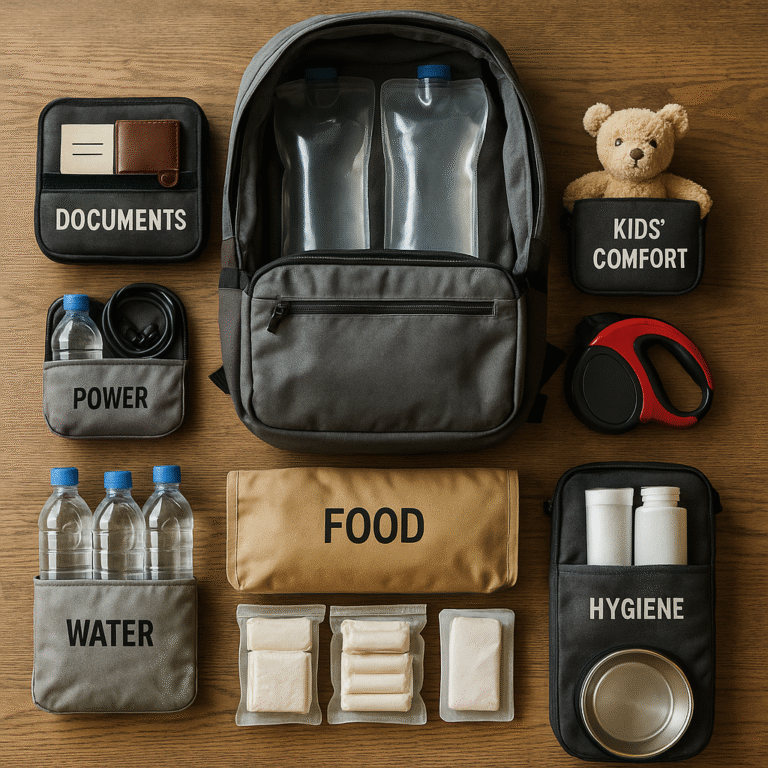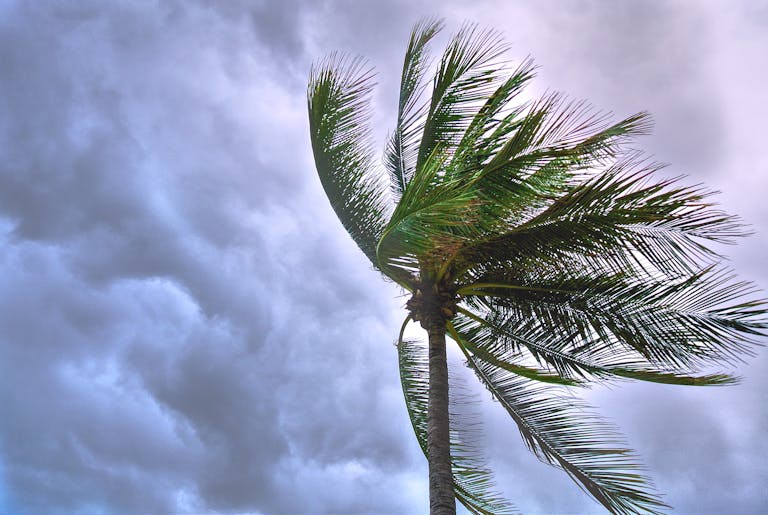Hurricane Pantry Planning: Shelf-Stable Foods for 14 Days
The goal of a hurricane pantry isn’t gourmet; it’s continuity. You want familiar foods that require little or no cooking, provide enough calories and protein, keep morale up, and can be rotated into everyday life so nothing goes to waste. Think in layers: water first, then calories and protein, then variety, fiber, and comfort. With a simple layout and a monthly five-minute rotation, your pantry quietly solves two weeks of meals whether the power is on or off.
Pantry math: right-sizing for your household
Use a practical baseline: ~2,000–2,500 kcal per adult per day and ~1,600–2,000 for kids. For a family of four over 14 days, that’s roughly 100,000–120,000 kcal total. Water planning is non-negotiable: at least 3 liters per person per day for drinking and light prep, or 168 liters for a family of four. Store most of that up front (bottles + jugs) and add a compact filter and purification tablets to extend if resupply lags.
Category targets (label the shelves)
- Proteins (25–30% kcal): tuna and chicken pouches, beans (canned), nut butters, jerky, shelf-stable tofu. Aim for 50–70 g protein per adult daily.
- Carbs (45–55% kcal): instant rice, quick oats, crackers, tortillas, ready noodles, shelf-stable bread.
- Fats (20–30% kcal): nuts, trail mix, olive oil packets, coconut milk.
- Fruits & veg: fruit cups in juice, applesauce, canned corn/carrots/tomatoes, shelf-stable smoothies.
- Hydration & electrolytes: water, low-sugar electrolyte mix, oral rehydration salts.
- Comfort & morale: coffee/tea, cocoa, chocolate, shelf-stable milk, seasonings (salt, pepper, hot sauce).
No-cook & low-fuel meal map (repeatable 3-day cycle)
Use a simple three-day rotation and run it five times to cover two weeks (with a buffer day). The idea: minimal prep, shared ingredients, and zero reliance on refrigeration.
| Meal | Day 1 | Day 2 | Day 3 |
|---|---|---|---|
| Breakfast | Overnight oats + fruit cup | Granola + shelf-stable milk | Oats + peanut butter + honey |
| Lunch | Tuna + crackers + veggie cup | Chicken wrap (tortilla + chicken pouch + salsa) | Bean dip + tortillas + olives |
| Dinner | Ready rice + chili | Soup over ready rice + oil packet | Instant noodles + chicken pouch + corn |
| Snacks | Nuts, bars | Applesauce, jerky | Crackers, chocolate |
Tip: If you keep a small butane or propane stove, you can upgrade “no-cook” to “low-fuel cook” in minutes. Keep spare canisters sealed and stored safely per manufacturer guidance.
Storage that survives chaos
- Bin labeling: Big, high-contrast labels for GRAINS, PROTEIN, FRUITS, WATER, COMFORT, EAT FIRST (soonest expiration).
- FIFO rotation: first-in, first-out. New items go to the back; the front bin becomes next week’s lunches.
- Pest & heat control: seal sweets and grains; store off the floor; add desiccant packs in the summer.
- Micro-inventory: a single checklist taped inside the door—update during monthly checks in under five minutes.
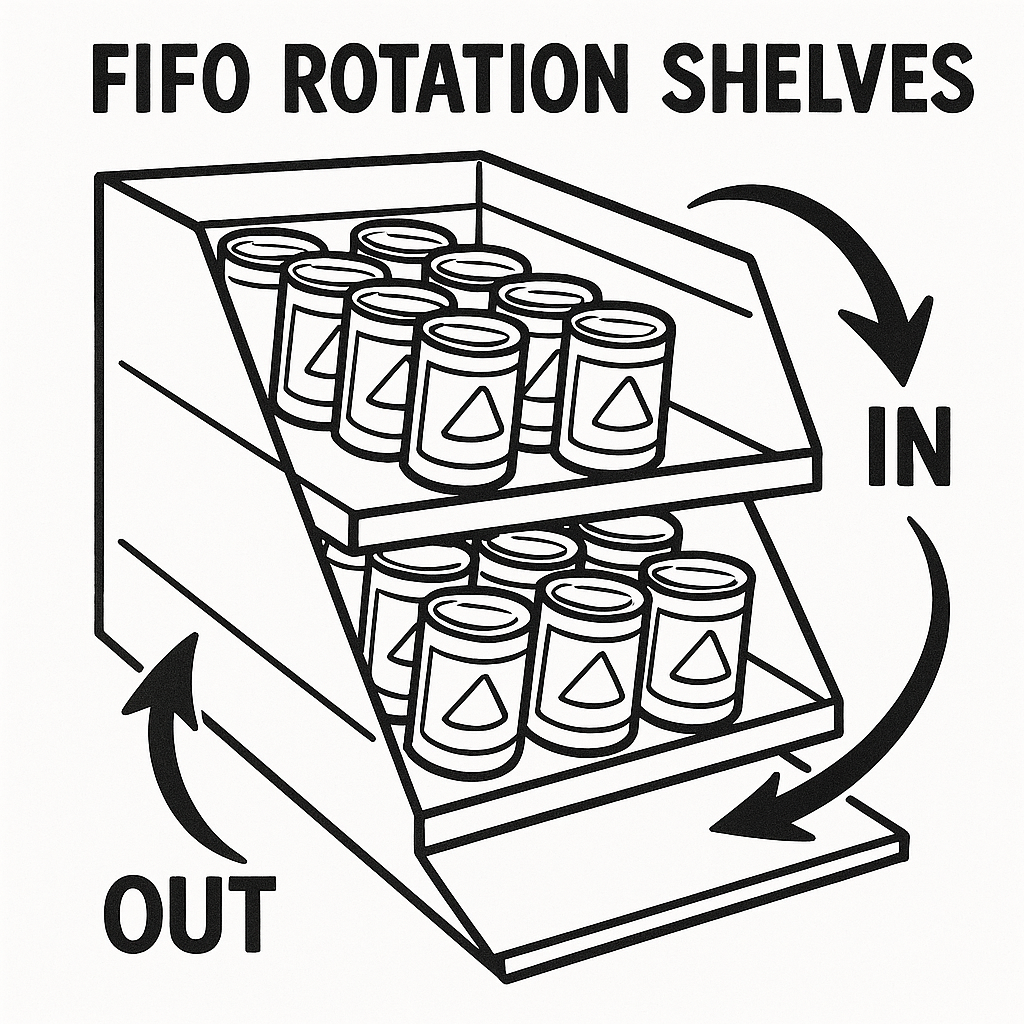
Dietary needs & substitutions
Match your pantry to your people. For gluten-free households, prioritize rice, corn tortillas, GF crackers, and GF oats. For dairy-free, choose plant milks and shelf-stable smoothies. For infants, plan formula/toddler milk, puree pouches, and diapers for the full period. For seniors, add easy-open packaging and softer textures (soups, oats, smoothies).
What about cooking without power?
A hurricane pantry should work with no cooking, but having low-fuel options improves nutrition and morale. A compact butane stove, Sterno kit, or rocket stove can heat soups and boil small pots of water. Keep a lighter, windscreen, and safe surface ready. If you rely on a generator, plan to cook in batches early and then pivot back to no-cook meals to conserve fuel.
Food safety in outages
- Eat perishables first. Keep fridge/freezer closed to preserve cold mass.
- Discard bulging, leaking, or off-smelling cans. “When in doubt, throw it out.”
- Use clean utensils for every can/pouch; don’t double-dip between containers.
Water plan you’ll actually maintain
- Baseline: 3 L/person/day × 14 days. Mix bottles and 1–5 gallon jugs.
- Extension: compact filter + purification tablets if municipal supply is slow to restore.
- Refresh cadence: rotate stored water every 6 months; mark dates on caps with a paint pen.
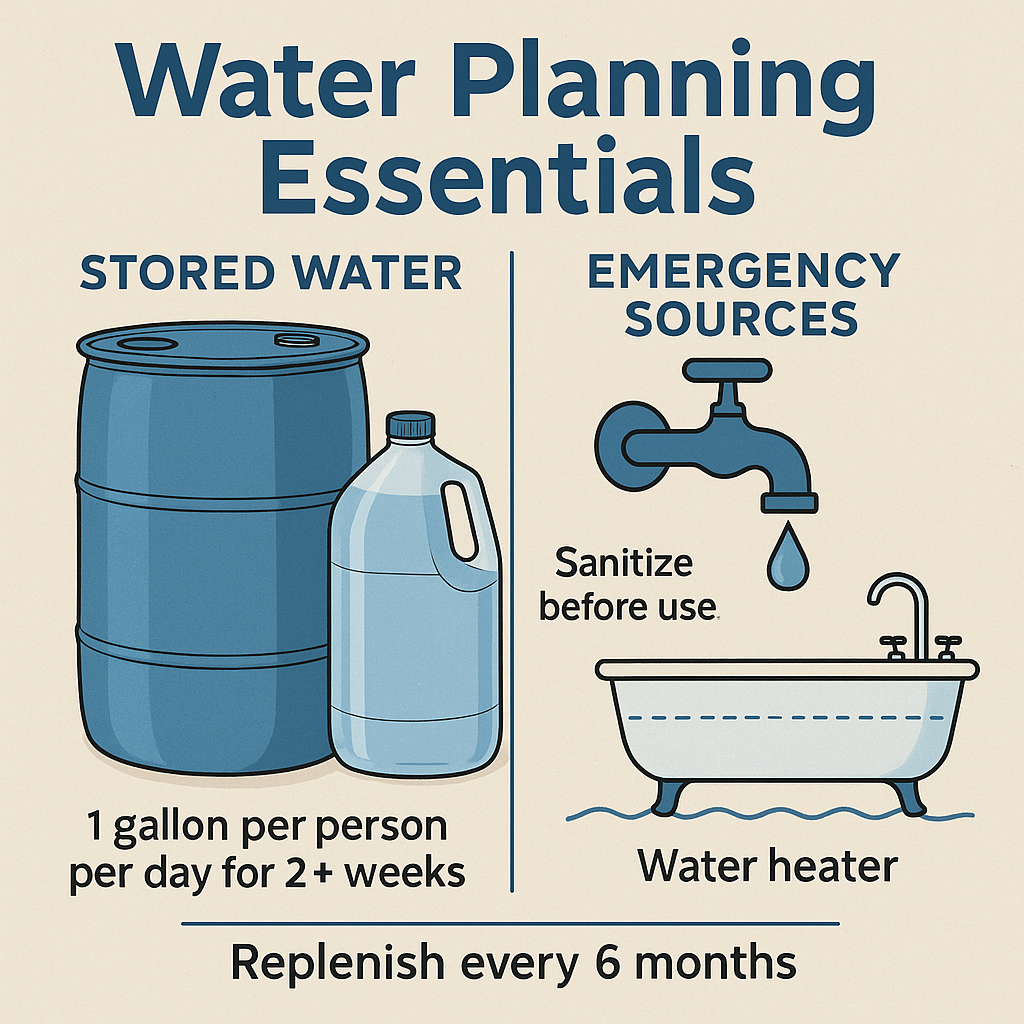
Pre-storm checklist for your hurricane pantry planning (48–24 hours out)
- Top off water and finish the 14-day meal plan sheet for the pantry door.
- Freeze gel packs; pre-chill coolers if you’ll preserve fridge items for day one.
- Charge power banks; set aside manual can opener and disposable utensils.
- Pull “EAT FIRST” bin forward for day-one meals.
Printable 14-day checklist
Turn this plan into a single page: category targets, meal cycle, and water totals. Print two—one on the pantry door, one in your go-bag. Update the sheet during your monthly five-minute rotation.
Household & Water
- People: 4 (2 adults, 2 kids) for 14 days
- Water: 168 L total (~44.4 gal)
- e.g., 14 × 24-packs of 0.5L bottles (or mix with gallon jugs)
- Compact filter + purification tablets (extension)
Proteins (suggested starting counts)
- Tuna pouches (2.5–3 oz): 28
- Chicken pouches (2.5–3 oz): 28
- Beans, canned (15 oz): 28
- Peanut butter, 16 oz jars: 6
- Jerky, 1 oz servings: 28
Carbs
- Ready rice pouches (8.8 oz): 30
- Instant oatmeal packets: 56
- Crackers (1 sleeve): 30
- Tortillas (10-count packs): 8
Fats
- Nuts/trail mix (1 lb bags): 6
- Olive-oil packets (10-pack): 2
Fruits & Vegetables
- Fruit cups in juice: 28
- Applesauce cups: 28
- Canned tomatoes/veg (14–15 oz): 20
Comfort & Morale
- Chocolate bars: 14
- Shelf-stable milk (8 oz): 14
- Coffee/tea/cocoa packets: on hand
Helpers & No-Cook
- Soup, ready-to-serve cans: 20
- Chili cans: 14
- Salsa/condiments: assorted
Tools & Paper
- Manual can opener; disposable utensils; paper towels; trash bags; cooler + gel packs
Rotation & Labels
- Big labels: GRAINS • PROTEIN • FRUITS • WATER • COMFORT • EAT FIRST
- FIFO: new to back, EAT FIRST to front; 5-minute monthly check




